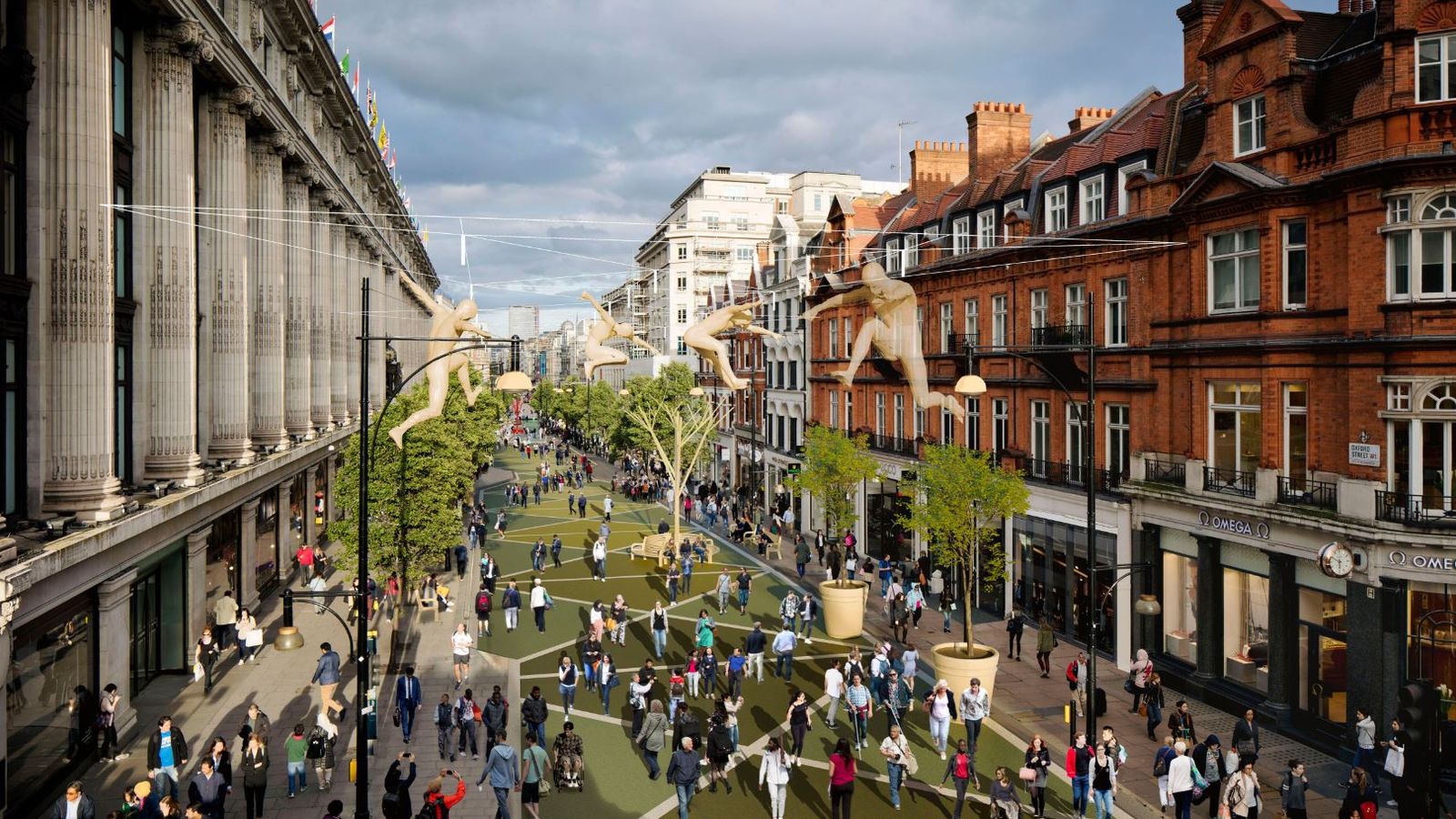Journey through Surrey's finest pubs, from historic inns to award-winning gastropubs, and uncover where your next memorable pint awaits.
In a bold move to reshape one of London's busiest shopping districts, Mayor Sadiq Khan has unveiled plans to ban traffic from Oxford Street. This ambitious proposal aims to revolutionise the iconic thoroughfare, potentially transforming it into a pedestrian-friendly haven in the heart of the capital.
A Vision for a Car-Free Shopping Paradise
The often-congested Oxford Street, known for its bustling crowds and endless stream of vehicles, may soon see a dramatic change in its landscape. Mayor Khan's initiative seeks to prioritise pedestrians and create a more inviting environment for shoppers and visitors alike. While details of the plan remain limited, the prospect of a traffic-free Oxford Street has already sparked interest and debate among Londoners and city planners.
Transforming Oxford Street: A Bold Vision for London's Retail Hub
Mayor Sadiq Khan's ambitious plan to ban traffic from Oxford Street marks a significant shift in urban planning for one of London's most iconic shopping destinations. While specific details of the proposal remain limited, the core concept aims to prioritise pedestrians and create a more inviting environment for shoppers and visitors alike.
Oxford Street, known for its bustling crowds and constant stream of vehicles, has long been a symbol of London's retail prowess. However, the congestion and pollution associated with heavy traffic have increasingly become concerns for both city officials and the public. Mayor Khan's initiative seeks to address these issues head-on by reimagining the street as a car-free zone.
Potential Benefits and Challenges

The proposed traffic ban could bring numerous benefits to Oxford Street and the surrounding area. A pedestrianised thoroughfare would likely improve air quality, reduce noise pollution, and create a safer, more pleasant experience for shoppers. It could also potentially boost foot traffic for retailers, as visitors may be more inclined to spend time browsing and exploring without the stress of navigating busy roads.
However, implementing such a significant change to a major urban artery is not without its challenges. The plan will need to address concerns about accessibility, particularly for those with mobility issues or those who rely on vehicular transportation. Additionally, the impact on local businesses during the transition period and the rerouting of traffic to surrounding streets will need careful consideration.
Public Reaction and Next Steps
The announcement of Mayor Khan's plans has already sparked interest and debate among Londoners and city planners. While many are excited about the prospect of a more pedestrian-friendly Oxford Street, others may have concerns about the practicality and potential consequences of such a significant change.
As the proposal moves forward, it is likely that there will be extensive public consultations and impact assessments to ensure that the needs of all stakeholders are considered. The success of similar pedestrianisation projects in other major cities around the world may provide valuable insights and models for London to follow.
While the timeline for implementation remains unclear, Mayor Khan's vision for a traffic-free Oxford Street represents a bold step towards creating a more sustainable and livable urban environment in the heart of London. As further details emerge, the plan will undoubtedly continue to be a topic of much discussion and interest for residents, businesses, and visitors to the capital.
Looking Ahead: The Future of Oxford Street
As London contemplates this transformative proposal, the future of Oxford Street hangs in the balance. The potential ban on traffic represents more than just a change in transportation policy; it signifies a shift in urban philosophy, prioritising people over vehicles in one of the world's most famous shopping districts.
Economic Implications
The economic impact of pedestrianisation could be significant. While some businesses may initially struggle with the change, evidence from other cities suggests that foot traffic often increases in car-free zones, potentially leading to higher retail sales. The transformation could also attract new types of businesses, diversifying the street's offerings and creating a more dynamic shopping experience.
Environmental Considerations
Beyond the immediate benefits of reduced pollution and noise, a car-free Oxford Street could serve as a model for sustainable urban development. The project aligns with broader efforts to combat climate change and improve urban livability, potentially inspiring similar initiatives across London and beyond.
Cultural Shift
The proposed changes to Oxford Street reflect a growing global trend towards more pedestrian-friendly city centers. This shift could influence how Londoners and visitors alike interact with the urban environment, fostering a stronger sense of community and encouraging more active, healthy lifestyles.
Technological Integration
As the project develops, there may be opportunities to incorporate smart city technologies. From interactive displays to real-time information systems, technology could enhance the pedestrian experience and help manage foot traffic more efficiently.
A New Chapter for London
While challenges remain, the potential transformation of Oxford Street represents an exciting new chapter for London. As the city continues to evolve, this bold initiative could redefine urban spaces for generations to come, cementing London's position as a forward-thinking global capital.